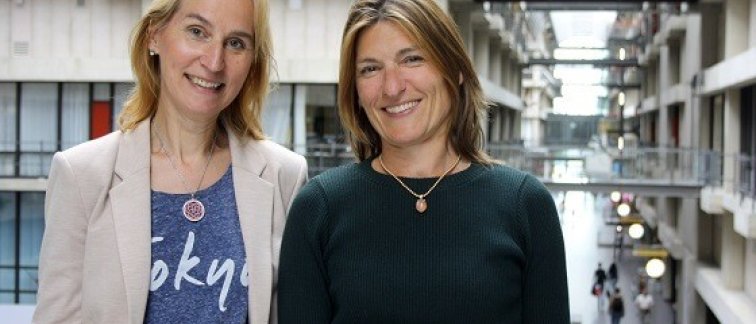Organoids (highly simplified versions of organs that are grown in the lab) are hot. They are used all over the world for scientific studies. Researchers * from Amsterdam UMC go a step further: they want to make a stackable system of organoids for research into virus infections. The consortium they set up for this purpose recently received a European subsidy of 6 million euros.
For a moment they wondered whether their dream was too big, whether they didn't want too much. But the reviewers who bothered about their European grant application dismissed it. “A pleasant surprise, because the competition for this subsidy is enormous,” says Dasja Pajkrt, specialist in infectious diseases in children. Together with clinical virologist Katja Wolthers, she laid the foundation for the consortium GUTVIBRATIONS (with a nod to The Beach Boys' world hit Good Vibrations): Gut Virus Brain Axis Technology in Organoid Science.
The pair had previously formed the OrganoVIR (organoids for virus research) consortium, in which they collaborate with scientific institutions and leading biotech companies in Europe. The aim of that consortium is to train researchers to work with organoids for research into viral infections. “That is a fairly new application,” says Wolthers. Organoids are already widely used for toxicological research, for example to see what effect a new drug has on the liver.
With the GUTVIBRATIONS consortium, which also includes several partners from OrganoVIR, the pair wants to take a new step in the application of organoids for virus research. Now they are used to mimic one organ outside the body. This is done with human cells that are grown in the lab into a three-dimensional structure that has many similarities with a real organ - a mini-organ.
3D printer
“We want to make a stackable system, combine multiple organs in one culture system,” explains Wolthers. "With that you simulate the situation in the human body better." This cultivation system must be so user-friendly that any researcher can use it. Wolthers: “Remember the principle" anyone can build with Lego ", it should be that simple. We are going to develop plastic plates that you can print with a regular 3D printer. You can grow your organoids on it. And those pictures can be linked together. ”
The first system they will work on is a gut-brain axis. “In the body, the intestines and the brain communicate with each other. We can already grow and study gut mini-organs and brain organoids separately, ”says Pajkrt. “We bring these mini-organs into contact with a simulated blood-brain barrier, which ensures that harmful substances in the body do not simply end up in the brain via the blood. The question we want to answer with the help of this model is: how is it possible that you get meningitis if you swallow a virus? ”
Less animal testing
Building such models that mimic larger systems in the body is a big step out of the pair's comfort zone. Hence the collaboration in a consortium, because in addition to biological and virological expertise, a lot of technical knowledge is also required. “We are sitting around the table with the top Lego builders,” says Wolthers. Such as the Technical University of Denmark (DTU) and in Sweden the Royal Institute of Technology and biotech company Biolamina **.
Pajkrt: “We hope to build a model that is as 'human' as possible. A model that is representative of a virus infection in humans, so that you can test antiviral drugs for it. I think that you get faster and better answers to your research questions than with animal experiments. We have already shown that studies with mice are no longer necessary if you test certain drugs on brain organoids. ”
Text: Irene van Elzakker
*Researchers from Amsterdam UMC involved in this project: Dasja Pajkrt, Adithya Sridhar, Katja Wolthers (all from Organovir Labs), Carla Ribeiro and Renee Schreurs (both from the Experimental Immunology department)
** In addition, there is collaboration with immunologists, virologists and stem cell biologists from Amsterdam UMC, DTU, the Katholieke Universiteit Leuven, the gene therapy company uniQure and StemCell Technologies, which makes culture media for organoids.

